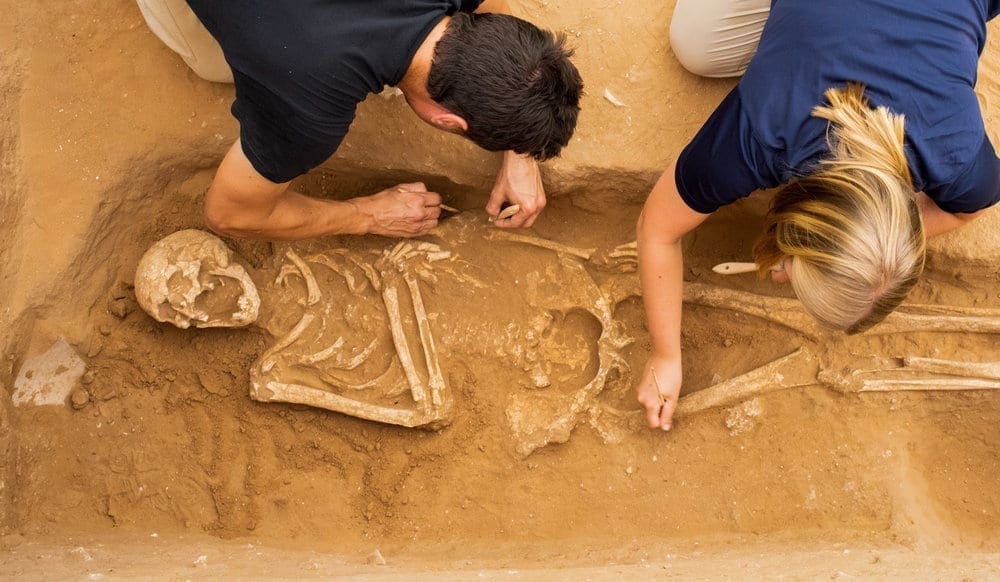Bible scholars have long speculated about the origins of the Philistines, who showed up in southern Palestine during the transition from the Late Bronze Age to Iron Age I, somewhere around 1200 BCE. After failing to conquer Egypt in a sea battle that cost the Egyptians sorely, the Philistines moved up the coast and settled in an area between modern day Gaza and Tel Aviv.

Adam Aja and Samantha Suppes excavate a 10th-9th century BC skeleton from ancient an cemetery in Ashkelon. Photo from the Levy Expedition to Ashkelon webpage: http://digashkelon.com/philistine-origins
The Philistines occupied five major cities sometimes known as the “Philistine Pentapolis”: Ashkelon, Gath, Gaza, Ekron, and Ashdod. Only Ashdod and Gath were large cities in the early period and up until the 10th century time of David and Solomon. During the 8th and 7th centuries, Ashkelon expanded to become an important seaport and Ekron became a major producer and exporter of olive oil.
But where did the Philistines come from? It’s likely that they were among several population groups within a larger migration of “Sea Peoples” who came from areas along the northern Mediterranean coast. Their material culture suggests connections with Aegean culture. Did they come from Cyprus? From Crete? From the southern Greek mainland? From western Turkey?
New findings based on a genetic analysis of DNA recovered from skeletons found in Ashkelon now offer evidence that the Philistines were definitely from southern Europe, though it still does not pinpoint a specific location.
The findings, announced in the July 3 issue of the journal Science Advances, were based on an analysis of DNA from 10 skeletal fragments. Some were dated to the Middle Bronze Age (around 1700-1500 BCE), some to the Early Iron Age (between 1300 and 1100 BCE), and some to the 10th and 9th centuries.
A comparison of DNA between the three groups and other samples known from the Mediterranean basin showed that the older skeletons from Ashkelon bore the local Levantine genes alone, but the Iron Age I skeletons bore an admixture of genes associated with southern Europe, the time of the Philistines’ arrival.

A jug from Ashkelon, 12th-11th century BCE. From the Israel Museum: “Ashkelon: a Retrospective (https://museum.imj.org.il/en/exhibitions/2016/ashkelon/)
The Philistine cities retained elements of a distinctive Philistine culture for hundreds of years (they ate both pigs and dogs, for example, and used distinctive pottery). Surprisingly, however, the genetic signature of their southern European origin had disappeared in samples from the later skeletons, indicating sufficient intermarriage with the local populations to dilute the Philistine DNA beyond recognition.
From then on, the study suggests, if someone was identified as a Philistine, it would be based on culture — not genes. That brings us to what we might call the Irony Age, for in modern English we use the word “Philistine” to describe a boor who has no culture.



